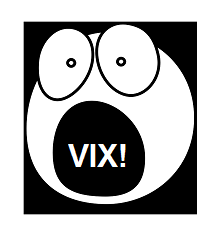Fed Brings High Anxiety
During the past several weeks, we have read numerous accounts of “we are reducing risk before the Fed”, which has a very rational fear-of-the-unknown basis. Over the same period, we cannot recall reading one anecdotal example of any institutional investor that was “loading up on risk before the Fed”, which means one possible scenario is lopsided expectations headed into the Fed; only time will tell.

What Is The VIX Telling Us?
The Chicago Board Of Options Exchange (CBOE), the home of the VIX “fear index”, published the following comments on Friday, December 11:
“The Federal Open Market Committee meets on December 15-16 and is widely expected to announce a rate increase at the conclusion of the two-day meeting. Thus far, the imminent prospect of tighter monetary policy has made few waves. In the equity market, the CBOE Volatility Index (VIX Index) is up for the week, but has exactly the same value (22.55) as it had on October 1, when a rate hike by December 2015 was viewed as improbable. The CBOE/CBOT 10-year U.S. Treasury Note Volatility Index (TYVIX Index) is at almost at the same value as in October. However, volatilities indexes of foreign exchange markets are lower.
“Moreover, forward prices indicate that the market does not anticipate an increase in volatility in stocks through January 2016, and suggest volatility may even go lower. VIX is now in backwardation for the near term. The term structure of EUVIX has switched from backwardation to flat as EUVIX has dipped over the last week.”
VIX In Backwardation
Can we learn anything about stock market odds following periods of backwardation in the VIX? We do not claim to be experts in interpreting the VIX’s term structure. Out of curiosity, we searched for “VIX backwardation and stock market performance.” We found an admittedly anecdotal piece of evidence in the form of the chart and below, which was published on Business Insider in January 2014:









Leave A Comment